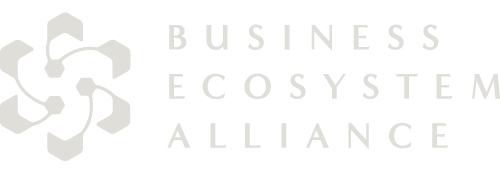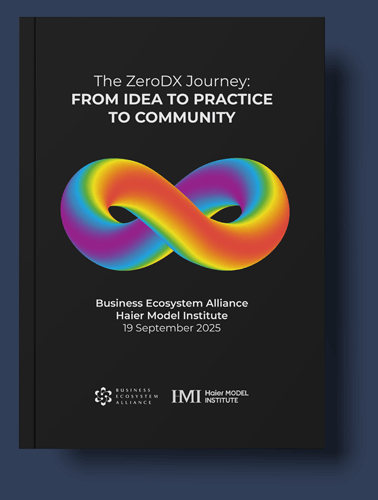Rainforests as a model for economic growth
Victor W. Hwang
What makes ecosystems like Silicon Valley tick? Can we bottle that magic? Can we replicate it to transform the way communities, cities, and countries grow?
Answering these questions has been my mission for over two decades. Despite enormous public investments globally, only a few regions like Silicon Valley have become enduring innovative, entrepreneurial ecosystems – human networks that generate extraordinary creativity and output on a sustainable basis.
My experiences as an entrepreneur, investor, and economic growth consultant have provided me unique insights at the intersection of private venture and public policy. I’ve worked with hundreds of organizations to foster entrepreneurial innovation, including development institutions such as the World Bank and the U.S. Agency for International Development, foreign and domestic governments, Fortune 500 corporations, economic development organizations, philanthropists and philanthropies, and many others. I recently led the Entrepreneurship work of the Kauffman Foundation, often regarded as the world’s leading philanthropy for entrepreneurs. Last year, I launched Right to Start, an advocacy campaign to make entrepreneurship a public priority for all.
Over the past two decades, my work has evolved into a comprehensive model to explain and build ecosystems: The Rainforest. The Rainforest model offers a new way of thinking by combining direct observations about the innovation process with emerging science on human psychology, evolutionary biology, design thinking, and social systems. To understand ecosystems, we must comprehend the dynamics of human nature, the invisible transaction costs that divide us, and the development of social norms that allow people to overcome barriers and create prosperity.
What is the Rainforest?
What is the difference between a farm and a rainforest? This is not a trick question. The modern discipline of business management might be described like running agricultural farms. It is focused on controlling systems, using tools to finely calibrate accuracy, precision, and productivity. The greater the control, the better the output. Companies are rewarded for efficiency, like farmers generating greater crop yields using better fertilizers, pesticides, and farming methods.
By contrast, in ecosystems, the greatest productivity comes from environments that resemble not cropland but rainforests. In nature, a rainforest functions not because of the mere presence of raw carbon, nitrogen, hydrogen, and oxygen atoms. Instead, it thrives because the elements combine to create new and unexpected flora and fauna. A rainforest is an environment with special characteristics – for instance, humidity, nutrients, and temperature – that encourage the creation of new species of animals and plants greater than the sum of their elements. A rainforest takes lifeless inorganic matter and creates systems of thriving organic matter.
Natural rainforests do not predetermine the evolution of new species, but they provide the right setting to foster their serendipitous evolution. The most promising life forms emerge in unpredictable ways from highly fertile environments. Human ecosystems are similar to rainforests. We cannot force specific innovations into existence sustainably, but we can design and shape environments that cause innovation to be born and thrive.
The Rainforest model requires a paradigm shift, because the agricultural model dominates management thinking. On a farm, we pull the weed that doesn’t belong. In a factory, we fire the assembly line worker who deviates. In the Rainforest, however, what looks like a weed might be the most valuable new plant in the entire ecosystem. Think of companies such as Google and Facebook in their early days – they were indistinguishable from weeds when they started. In Rainforests, the oddballs are the gamechangers. We want to nurture weeds to grow.
Thus, we arrive at a paradox. A company that seeks to manufacture cheaper, better, more profitable products must run operations like a predictable farm. But a community that seeks to generate high levels of innovation would do the opposite: emulate an unpredictable rainforest. While plants are harvested most efficiently on farms, weeds sprout best in Rainforests.
The science of the Rainforest
The Rainforest model is derived from the natural sciences. Increasingly, science is validating that human economic systems are also biological systems. Edward O. Wilson, arguably the most influential biologist in the past century, supports this notion. He once told me (he was my former professor) that understanding the principles of ecosystems is the ‘next big thing’ in biology and will require input from business and economics.
According to Wilson, evolutionary biology demonstrates that while selfish individuals tend to win against other individuals, groups of altruists tend to win against other groups. In other words, great teams beat great individuals, as a universal principle across all species. This evolutionary tension – between individual needs and group interests – explains why only a few species of animals, including bees, wasps, ants, termites, and human beings, have developed complex social instincts enabling them to take over much of the planet. Bee tribes, however, are static and hard-coded, while human tribes are dynamic and soft-coded. If a predator attacks a bee colony, that colony has to fend for its own survival. A startup can take on a large corporation by recruiting talent from around the world.
In human societies, unlike bee populations, the boundaries of tribes can be redrawn continuously to address evolving needs. Diverse human beings come together continuously to rally for common, pragmatic goals. That’s true, to some extent, everywhere. But in strong ecosystems like Silicon Valley, assembling diverse groups repeatedly is easier and less expensive. The transaction costs of organizing teams to solve ever-changing problems are simply lower.
However, human nature can get in the way. Our brains are instinctively tribal. We are designed to trust people closer to us and to distrust those further from us. High social barriers outside of close circles of family and friends are the norm in the world. Human nature, with its innate prejudices, can create enormous transaction costs in society.
What we think of as free markets are actually not that free. They are still constrained by transaction costs caused by invisible social barriers based on:
- geographical distance,
- lack of trust,
- differences in language and culture, and
- inefficient social networks.
Those social barriers can be high, and they can keep people isolated. Social barriers create transaction costs that stifle valuable relationships before they can be born. The instincts that once helped our ancestors survive – favoring distrust over trust when it comes to strangers – are hurting our ability to maximize innovation today.
Rainforests like Silicon Valley are able to overcome these transaction costs caused by social barriers through a distinct set of social behaviors. These social behaviors correspond to the mechanisms that are necessary to maximize the free flow of talent, ideas, and capital in a human network. These behaviors, however, require that individuals rise above short-term selfishness and focus on long-term mutual gain. The key factors in the strength of human innovation ecosystems are:
- diversity of talents,
- trust across social barriers,
- motivations that rise above short-term rationality, and
- social norms that promote rapid, “promiscuous” collaboration and experimentation among individuals.
Rainforests depend on leaders who actively bridge social distances and connect disparate parties together, like the role of keystone species that tie biological ecosystems together. Honeybees and hummingbirds are among the commonly known keystones in nature. In strong human ecosystems, keystones are those people whom “everyone knows.” They forge critical connections across boundaries that keep Rainforests alive.
Generally, people in Rainforests are motivated for reasons that defy traditional economic notions of ‘rational’ behavior. We call these “extra-rational motivations” because they rise above simple concepts of rational or irrational. Rainforests function when the combined value of social norms and extra-rational motivations outweigh the human instincts to fear.
The Rules of the Rainforest
Entrepreneurial innovation is built on its own set of unwritten laws. A successful Rainforest benefits from lower transaction costs because of unwritten behavioral norms that fill the gaps when traditional social structures don’t exist.
American individualism is often attributed to the frontier experience of the American West. Silicon Valley would likely never have existed without the culture of the frontier. But not just because of its emphasis on individualism, as most people assume. Silicon Valley is also the inheritor of the frontier spirit because of its unique collectivism. As historian Frederick Jackson Turner observed over a century ago, the tension between the individual and the collective is key. The frontier was conquered not just by individualists, but by a culture of pragmatic cooperation. Rainforests have replaced tribalism with a culture of informal rules that allow strangers to work together efficiently on temporary projects. Silicon Valley is an extension of that culture: marked by social networks where individualism is tempered by the need to participate within a community.
We have identified seven simple Rules of the Rainforest derived from the cultural norms that facilitated cooperation among pioneers on the American frontier. These Rules are woven into the invisible fabric of daily life in Silicon Valley and other strong ecosystems.
Rule #1: Break rules and dream.
Rule #2: Open doors and listen.
Rule #3: Trust and be trusted.
Rule #4: Experiment and iterate together.
Rule #5: Seek fairness, not advantage.
Rule #6: Err, fail, and persist.
Rule #7: Pay it forward.
Today and throughout human history — whether in Silicon Valley, the Gold Rush, the Dutch guilds, or various industries — we see a similar process. People tend to create informal rules when formal laws are insufficient to govern the practicalities of real-world interactions.
Moreover, the Rules of the Rainforest are only one-half of a binary system, a clash between two opposing social contracts. One social contract is based on values of production, with its zero-sum norms. The other is based on values of innovation, with its positive-sum norms. Both social contracts are legitimate in their own ways, but they are completely opposite in effect. If we write the social contracts down, making the implicit explicit, here is what they look like:
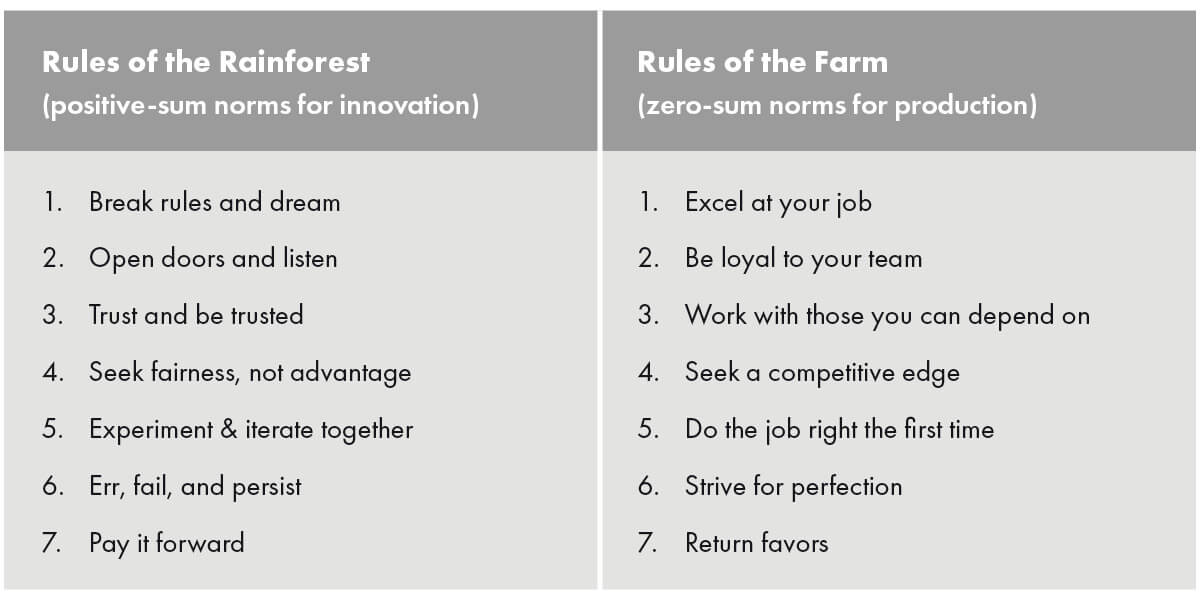
Each of the two columns above is a sound worldview. They are valid in their own right. However, upon reflection, you might notice that the two columns are perfectly opposed, item by item. And they lead to opposite results. The rules on the left side lead to creativity, serendipity, and uncertainty. The rules on the right side lead to productivity, efficiency, and predictability. Neither set of rules is wrong. The opposite of ‘trust’ is not simply ‘distrust’. The opposite of ‘excel’ is not simply ‘do a bad job’. People tend to see their own value choices as positive, not negative.
We can simplify these opposing social contracts even more, reducing them to the essential values being expressed. Each value below correlates to the corresponding rule above.
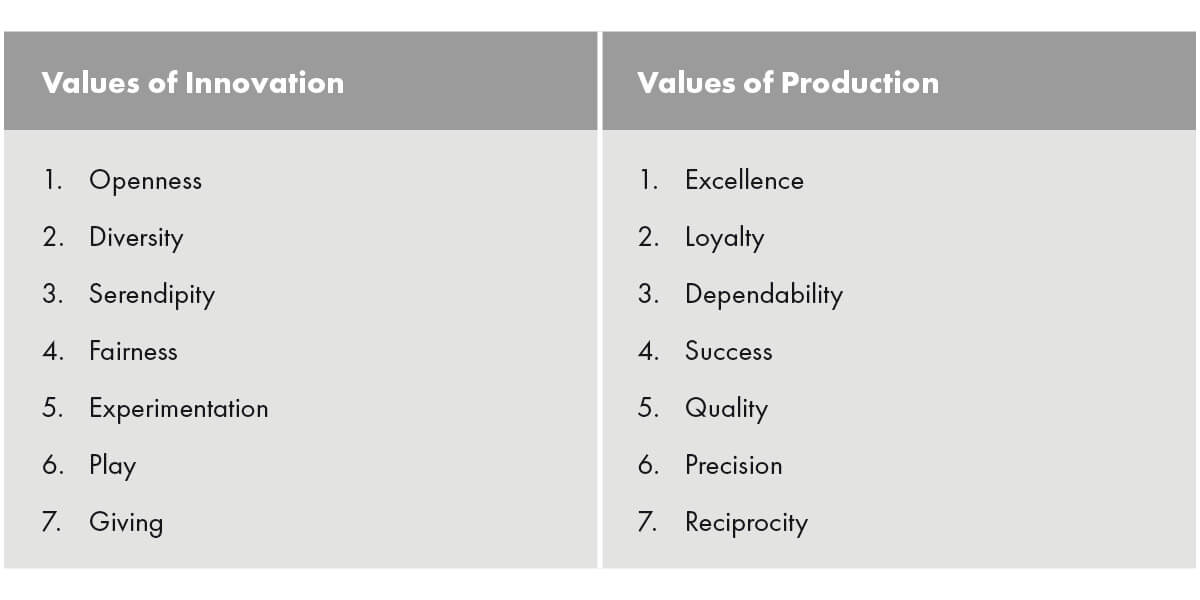
Successful companies must exist in both worlds – innovation and production – simultaneously. That’s hard to do. Innovators on the left often think of managers on the right as cold-hearted and lacking in vision. Managers on the right often think of innovators on the left as frivolous and impractical. But in reality, both sides need each other. Ideas that live only on the left side are stillborn. Institutions that get stuck on the right side become dinosaurs.
Good ideas fail because they cannot cross the cultural barrier between innovation and production. Silicon Valley’s success, arguably, comes from embracing the duality of both mindsets. For example, venture capitalists in the Valley must deal with hard numbers, but they’re also open to the idea that the next great entrepreneur might be a college dropout. You probably won’t recognize the next Mark Zuckerberg at first, so keep your mind open.
The Rainforest Curve
Modern leaders must learn how to drive innovation as an evolutionary, ecosystem-based process. To assist leaders, here’s a simple diagram that captures the Rainforest model, inspired by my collaboration with Stanford scholar Ade Mabogunje. It incorporates the two clashing worldviews and shows how they interrelate. It also explains why so many good ideas fail to grow, why old businesses get stale, and why only certain businesses thrive. I call this diagram the Rainforest Curve.
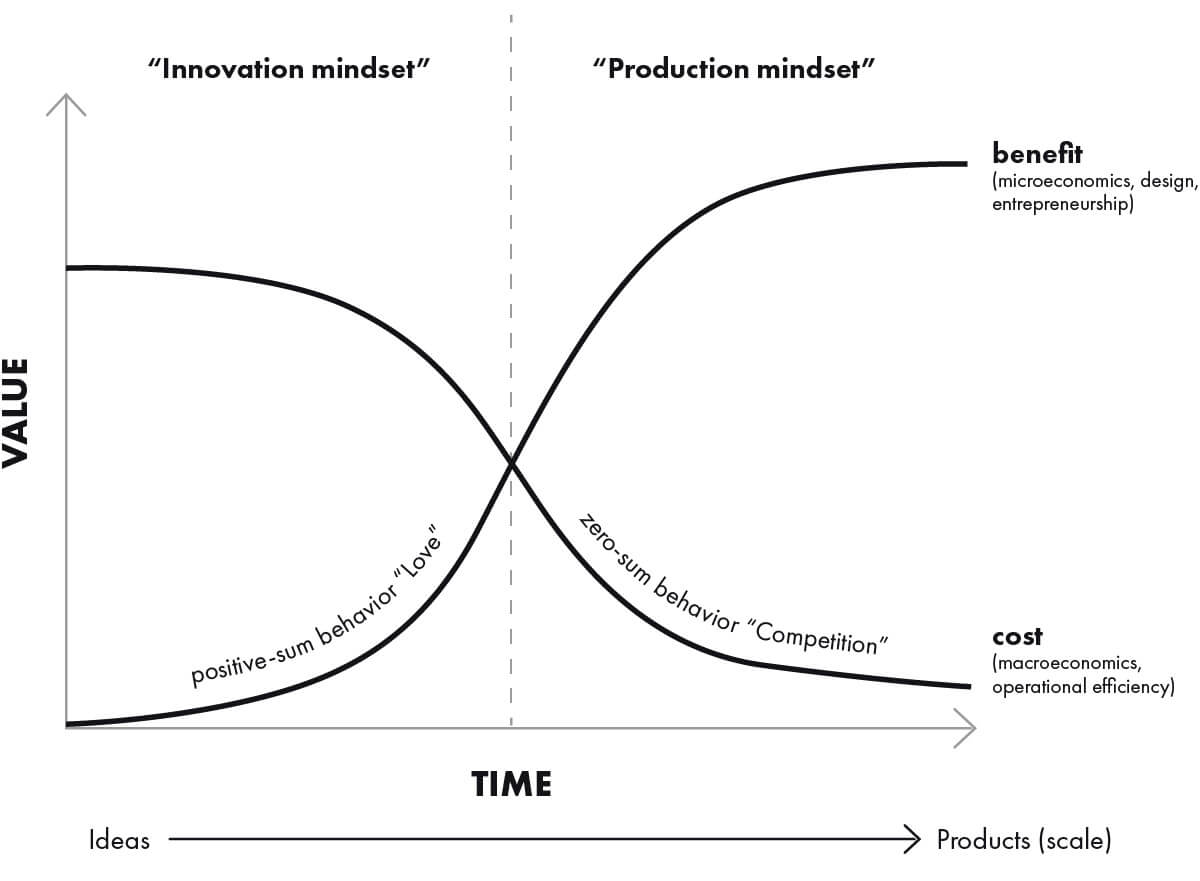
As ideas grow into products, from left to right, their beneficial value to a user increases. That’s the upward curve extending from the bottom left to the top right. The process of value creation is driven by positive-sum behaviors, like collaboration, team-building, and shared risk-taking. Think of the passion that a startup team invests in building their company. You see this behavior manifested in real life by entrepreneurs, designers, inventors, artists, researchers, and innovators.
As ideas grow, however, they cross a downward-sloping cost curve, which exerts real-world constraints. Those constraints include capital limitations, finite labor, or scarce resources. The cost curve is driven by zero-sum behaviors, like competition and squeezing out inefficiencies. Reducing the cost curve is what gave birth to the field of business strategy.
The intersection, where the curves meet, is like an invisible brick wall. Most new ideas, great breakthroughs, and startup companies die on the left. Most aging institutions, corporations, and governments die on the right. The crossover is the hardest part.
How to build Rainforests
To build Rainforests, we must transform culture. Public attempts to foster innovation that do not focus on changing human behavior are doomed to fail. People learn culture not from top-down instruction, but through:
- learning while doing,
- role modeling,
- peer-to-peer interaction with diverse partners,
- feedback mechanisms that penalize bad behavior, and
- making social contracts explicit.
In addition, building and maintaining Rainforests requires specific forms of leadership and capital sources. Leaders, such as keystones, must practice and enforce social norms, while bridging between social networks to bind greater communities together for common action.
The Rainforest model is more than a metaphor. Innovation ecosystems are not merely like biological systems; they are biological systems. Talent, ideas, and capital are the nutrients moving through this biological system. Human systems become more productive the faster the key ingredients of innovation talent, ideas, and capital – flow throughout the When particular social behaviors allow talent, ideas, and capital to move even more freely – as they are in Rainforests – we find that human networks can generate extraordinary patterns of self-organization.
The Rainforest model explains the largely invisible mechanisms that underlie innovative, entrepreneurial ecosystems like Silicon Valley. It is not creative destruction alone that is sufficient. Far more important is creative reassembly, the ability of humans to combine, recirculate, and recombine into ever-increasing patterns of efficiency.
Over the past decade, the Rainforest model has influenced the fields of economic development and entrepreneurship support. Hundreds of communities have adopted Rainforest-based ideas and practices – whether they realize it or not – which in turn has impacted hundreds of thousands of entrepreneurs and innovators.
Victor W. Hwang is founder and CEO of Victor & Company, an economic growth consultancy. He is founder and CEO of Right to Start, a campaign fighting to rebuild the economy by making entrepreneurial opportunity available to all. Previously, he was Vice President of Entrepreneurship at the Kauffman Foundation, the world’s leading philanthropy supporting entrepreneurs with an endowment of $2 billion. At Kauffman, he led initiatives that impacted over 200,000 entrepreneurs, including efforts in catalyzing capital formation, transforming economic development practices, launching a national policy roadmap, and breaking barriers for underserved entrepreneurs.
For more information on how Rainforest concepts have been translated and applied into practice, here are some resources:
Rainforest books and free tools at www.victorh.co
Kauffman Foundation Ecosystem Building Playbook at www.kauffman.org/playbook
Kauffman Foundation ESHIP Summit on building entrepreneurial ecosystems at www.eshipsummit.org
Official professional certification for Entrepreneurship-Led Economic Development, by the International Economic Development Council (link here)
America’s New Business Plan, a comprehensive policy roadmap for entrepreneurship, at www.startusupnow.org
Right to Start, a nonpartisan campaign to elevate entrepreneurial opportunity as a public priority by building an ecosystem for entrepreneurs and policymakers, at www.righttostart.org

